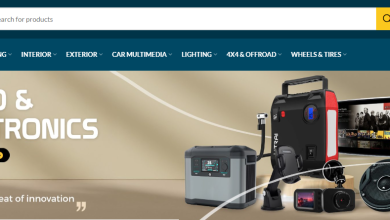SEO Strategies for SaaS Companies

SEO for SaaS companies is slightly different compare to SEO for another software business/company. In conventional software business, maybe they also want to place the site on top rank of search engine, but what they really looking for is just a visitor. They just need to explain their product then they will ask the customer to contact them in another occasion. This is because another software is tangible, means it can be touched, seen and get it just like conventional goods. Different with SaaS, customers need more understanding about your application because it will be used for their work or personal matters. High rank on search engine alone is not enough because SaaS customer is usually more critical. They will find out more information and even compare with another similar application. Finally they will decide to subscribe or purchase if they can make sure it’s the best application for them.
SEO stands for Search Engine Optimization. It is an action to place your site on top rank of search engine result for certain keyword. Global internet user this day is getting higher, and most of them using search engine to find information. The fact is, they only open first page result. It’s very rare they go to the next page and so on. Now this is where the importance of SEO service. Imagine if your site is on page 5, it’s the same as invisible. But if your site can be on top rank for certain keyword, it will generate more traffic and it’s a good thing because traffic coming from search engine has a good quality. This will bring you closer to your potential customer. Because of the importance of search engine, SEO often is considered as the most cost effective online and it’s suitable for SaaS with limited budget.
There is no doubt that SaaS has gained tremendous growth, and it’s going to impact conventional software business. But it doesn’t mean that success will come easily. With increasing usage and startups of SaaS application, competition will become more and more tight. What are you going to do to ensure that your application will get noticed by potential customers? Even though your application is great, if you can’t drive customers to your site, it will be hard for them to see how great your application is and it will impact your subscription or sales. Search Engine Optimization (SEO) can be a key for the success of your application. In this article, I’ll explain you about SEO for SaaS and why it’s so essential.
What is SEO for SaaS Companies?
SEO is irrelevant to SaaS companies when it doesn’t generate the right traffic. If a SaaS site sells CRM software, getting traffic for “cheap flights to Malaga” is not useful, even a high volume of such traffic. Organic search traffic per acquisition is also significantly cheaper than pay per click (PPC) traffic, as there is no longer an auction for keywords taking place, and a SaaS company can limit spending by reducing offsite work. SEO coming from an index of tweaks can be tracked and analyzed, and is easier to replicate compared to PPC, which despite doing a similar job to SEO in generating leads, is harder to correlate with the leads due to the ever-changing ad positions. Easier correlation equals more trust, and SEO at its best will allow a SaaS company to control the buying cycle. When a user is typing in key problems that the software solves, the company can be there to answer. Finally, the tough economic climate means there is less margin for error. SEO is a long-term strategy; getting it right means a consistent flow of leads when they are most needed.
Search engine optimization (SEO) is the process of increasing organic (non-paid) traffic to a website from search engines. Search engines crawl, index, and rank websites – it’s not a case of simply submitting a site to a search engine and the traffic appearing. Pages are indexed, and with tweaks to the site and individual pages, along with offsite work, traffic will increase. SEO has many facets, and as a useful tactic for increasing site traffic, it is becoming more relevant to SaaS companies. This relevance is because SaaS depends on online traffic to generate leads, and SEO directly influences online traffic.
Importance of SEO for SaaS Companies
SEO can also increase brand visibility to an international market. A lot of SaaS companies are catering to a worldwide audience due to the nature of their product (an internet-based software that can be accessed from anywhere). Global search behavior and preferred search engines can be quite different, but most methods of SEO can be used to optimize visibility to an international audience. Finally, SEO can provide long-term, sustainable traffic. Unlike paid search, organic traffic does not have an ongoing cost associated with it. The effects of a successful SEO campaign can last a long time.
The goal of any SEO campaign is to ensure a high level of visibility on search engine results pages. This is essential for SaaS companies, as search is a primary way of getting visitors to their website. If a SaaS website isn’t on the first page of organic search results for terms related to their business, they are losing potential customers. A higher search ranking is directly correlated to higher traffic from search engines. The higher the traffic, the better the chance of qualifying potential customers. The more traffic coming to a SaaS site from the right kind of customer, the shorter the sales cycle becomes. SEO also helps SaaS companies track the ROI on other online advertising programs. If the effectiveness of organic search can be measured and compared to other online marketing investments, it can influence the decision to invest more or less in those other marketing programs.
Keyword Research and Optimization
These are the first steps in a SaaS company keyword strategy and will be used in the next step to data mine and create a list of keywords to target.
– Brand Keywords: These are keywords related to your company’s brand or to specific product names and are of a limited scope. Usually, a user searching for these types of keywords will already know what they are looking for and are looking for your site specifically.
– Generic Keywords: These are very broad and can be applied to a wide range of products or services. They often apply to any industry and have a large search volume.
– Industry Keywords: These are used within the specific industry.
This will help identify what potential customers are searching for and the types of keywords that you might want to target. The first step in planning your keyword strategy is to segment keywords into the following categories:
Developing a keyword strategy is one of the most important tasks in the search engine optimization field. An effective keyword strategy will help your site to build up the traffic that you are targeting. In this strategy, we are outlining the process for SaaS companies to build up a keyword strategy and maximize it for best results.
Identifying Relevant Keywords for SaaS Companies
Identifying relevant keywords is the foremost and foundational step in keyword research. The objective is to identify the most relevant keywords for your company. Without conducting this step, all of the time and money invested in SEO will be fruitless. Most SaaS vendors are overly ambitious in competitive keyword targeting and as a result spend too much time and money in optimizing the wrong keywords. It takes years to get to the top of highly competitive keyword SERPs. Surely this objective would be significant time later on, but is not a valid strategy for new or established SaaS companies. Instead, focus on the “low hanging fruit”, keywords that are often comprised of 3-4 word phrases that are very specific to your software. These keywords are less competitive and while they may provide less traffic, the traffic is much more targeted and of higher quality. In order to figure out what 3-5 word phrases are used in your industry, the best approach is to simply ask your sales and business development teams what questions are most frequently asked by prospects. Jot down listed phrases and then go to Google external keyword tool and type in each phrase. The tool will then give you a list of the most popularly related long-tail keywords. Often times you will come across keywords that are not specifically related to the phrase you entered but would still be useful for your company. An example would be a company that sells software for automating employee tax forms being suggested for bid management software. Make sure that in these cases the keyword is still somewhat related and that the traffic would possibly be qualified.
Optimizing Website Content with Keywords
One of the most significant SEO tactics is to include specific keywords into your website content. However, you will want to make sure that the keywords are not forced into the content. It is important that your website content remains high quality and relevant. Search engines track how often keywords are used on a site and take note of how relevant the keywords are to the content on the site. It is possible to have a high keyword density, which in turn will affect the search engine’s perception of a site and result in lower rankings. This will essentially “pollute” your website in the eyes of the search engines. A high keyword density also increases the probability of a search engine flagging your website for bad SEO practices. Keywords should be strategically placed within the content. Generally, it is a good idea to place keywords near the beginning of paragraphs and sentences as well as headings. The placement of keywords is taken into consideration when search engines index pages. A site that has keywords placed in meta-tags and titles, as well as in the page URL, will definitely have an advantage. Keyword placement within links is also helpful, as long as the link is relevant to the content on the page. An ideal way to increase keyword density (when the keywords are relevant) is by adding more content to the site. This is helpful as long as the quality of the content remains high and not “filler” content designed to further increase keyword density.
Utilizing Long-tail Keywords for SaaS Companies
Long-tail keywords consist of three or more words, making them highly specific search terms utilized by a smaller, more targeted demographic. Typically, they are less broad than their shorter counterparts. Long-tail keywords are incredibly important to SaaS companies due to their niche markets. Utilizing long-tail keywords is the best approach to take when targeting a select group of consumers and is necessary for driving qualified traffic. Additionally, ranking well for long-tail keywords is far easier and quicker than ranking for more competitive shorter keywords. As a result, this will boost momentum and increase traffic as more long-tail keywords are implemented. Step 1 to making the most of long-tail keywords is to allocate relevant phrases. It is important to not only target the audience you want to reach but also to attract the right type of visitor to your site. By targeting specific demographics, you are upping your chances of attracting the relevant consumer to your product.
Technical SEO for SaaS Companies
Ensuring your website is secure is also a recent addition to Google’s range of ranking factors. This is an especially important factor for SAAS businesses as they often represent a treasure trove of private customer data. To ensure you secure your website, you must first determine the current state of your security. You can use a free tool such as the SSL server test to determine your server’s security rating. You should ensure that all data to or from your website is encrypted and prevent mixed content warning by using only HTTPS on your webpages. It is wise to only use security headers that have been proven to work in all browsers. Finally, be sure to conduct more regular security audits to stay ahead of the game.
One of the most recent changes to Google’s ranking algorithms is the increasing importance of mobile-friendly websites. With the mobile-first index now rolling out for a range of websites, it has never been more important to ensure your website is mobile compatible. This also applies to SAAS businesses; with B2B apps, there is often the misconception that mobile compatibility is not essential, however, this is no longer the case. Measures should be put in place to ensure mobile search visibility, and separate content on mobile URLs is discouraged by Google.
To increase your website speed, you should first determine what is the current speed of your site. Google’s PageSpeed Insights is a great tool for this, along with more in-depth results provided through Webmaster Tools. Once you have a clear idea of the speed, you should combine any CSS and JS files that are rendering your above-the-fold content. Combining these files will reduce the amount of requests to your servers. You should then minify your code and optimize your image sizes. After this, you will see a big improvement in overall website speed.
The primary goal of technical SEO is to improve the website structure and make it easier for search engines to crawl your site. This will have a knock-on effect on overall search engine rankings. Google has stated that it uses website speed as a ranking factor and that it’s especially important for crawling.
Optimizing Website Speed and Performance
Measuring performance should be your first step. Test the mobile and desktop speeds using Google PageSpeed Insights, ensuring that you are taking into account the user experience; website load time data accessed from Analytics or speed data like server response times and your overall site speed. With this data, create a benchmark in which to improve upon. Further recommendations would be tools such as Firebug, YSlow and WebPageTest. These are all useful in identifying performance related problems. YSlow is similar to taking a car for an MOT, it performs a general check-up, makes a performance grade and provides suggestions on how to improve the page. Firebug monitors HTML, CSS and JS in real time with performance analysis. Google has emphasized improving user experience by giving quality feedback on a web page’s performance through the use of its Chrome User Experience Report, a public dataset of key user experience metrics gleaned from the browsing experience of millions of users. This includes information on learning about loading speeds on a 4G connection, suitable for mobile pages.
A faster website has become a stronger ranking signal for the Google search algorithm. This is especially true since the induction of ‘Mobile First Indexing’, where Google now indexes the mobile version of a website as the primary version, serving to rank results whilst looking at the mobile version, are of paramount importance and should provide a sense of urgency to get your site up to speed. Mobile website speed is likened to a little like air travel. A page request is sent or a passenger boards a plane. Then the content is positioned into place or the passenger takes their seat. Loading time is akin to the duration of the flight. If the flight is short, then it is been performed efficiently. Similarly, faster is flight means everything has gone quickly and smoothly. Your aim is to make that loading time as short as possible for both mobile and desktop.
Implementing Mobile-friendly Design
Mobile-friendliness is a major Google ranking factor. If your site is not mobile-friendly, you’re at a major SEO disadvantage already. While Google has said it is going to switch to a mobile-first index, but even if they don’t, you’ll still lose users with a bad mobile site. The first step to a good mobile site is to have a responsive site. A responsive site will flow the same information from your desktop site onto your mobile site, eliminating any room for error. If you’ve already got a responsive site, you’re at an advantage and should be able to carry out changes on a test site for your mobile site. This can be done by using the robots.txt file to the test site so Google can’t pick it up, or by testing it on Google’s mobile site checker. Your changes can be in several areas: site navigation, mobile site design, content, and structured data. When considering how to create a mobile version of your site, it’s best to keep it as simple as possible. With less space to work with, the design has to be easy to navigate and look good. Usually, a mobile version site is designed as a smaller version of the main site, but with a different form of structured data such as a mobile URL or different HTML. However, Google recommends using responsive web design, where your desktop and mobile sites are the same, which is Google’s preferred way of making a site mobile-friendly. With responsive design, the same HTML is used for both the desktop and mobile devices with CSS used to change the rendering of the page on the different devices. It also has less room for error and would be considered easier than having two versions of the same site. Using responsive design would entail removing any flash-based content, as it can cause bugs and/or consume resources on mobile devices. This makes the site less complex and less difficult to maintain, as there’s only one version to look after. Although having a mobile site can increase a site’s visibility on search engines, it is not useful to have if it is a mobile version on a different URL. Using a mobile URL different from the desktop URL requires redirection from the desktop page, but if blocked from robots.txt, Google would not be able to pick it up and thus will not recognize the page as mobile-friendly.
Enhancing Website Security and User Experience
User experience is incredibly important in the success of an SaaS website. If your application is in fact a cloud-based service, then your website is essentially the product. There is such a wide scope for SaaS that this topic could be covered in many volumes, but we will focus on some general principles. High quality, original web design is the first thing that will appeal to a user and conversion is more likely if the user is impressed. Often less is more when it comes to information as too much clutter can confuse the user. They need to be able to grasp what it is you are selling very quickly, and the most effective way of doing this is usually a short message and some visuals. That isn’t to say you should avoid detailed information, as this is still required for conversion, and the best practice is to have this content a few clicks away from the initially accessible information. A good example of this would be a landing page for what your product does, and a link to an FAQ or a forum.
In the online world of SaaS, security is of paramount concern. Users need some solid convincing that their data and processes are secure from prying eyes, because they are essentially no longer in possession of these things locally. One thing that can immediately brand your service as a rogue operation is having your site tagged with malware or a virus. Especially in the case of the big search engine, this will result in a huge black mark against your website, and you will find it nigh on impossible to remove such a label. Regular security checks and a secure hosting environment are essential. Completing these measures should result in your website being free from any harmful content, and shall thus maintain a good standing with the search engines and your users. An SaaS offering may also consider a partnership with a security software vendor, this could lead to inclusion within its partner directory and therefore some valuable inbound links.
Structuring URLs and Implementing Schema Markup
A URL is a sequence of characters that describes the path to a particular page on the internet. Constructing URLs that are SEO friendly involves an intricate process. URLs should be simple, static, descriptive, accurate, and keyword-rich. In terms of technical requirements, static URLs are preferable to dynamic URLs. This means websites that are database-driven use URL parameters to search databases; often these will result in un-user-friendly, overly long URLs, or even have search-related URL problems. Static URLs, meanwhile, are known to be better for SEO as they are whole words separated by hyphens. Static URLs also tend to rank better in search engines, but there is a higher development cost because of URL rewriting. Include keywords in URLs for SaaS SEO. It has been confirmed that a Google ranking factor is the URL; therefore, keywords that you are trying to rank for should be added to the URL of a page. But it is important not to overdo this; it could look like keyword stuffing, which will harm performance. Inaccurate URLs have shown to reduce search traffic. If your URL structure is changed, a 301 redirect from the old URL to a new one is needed to transfer maximum page rank. Although too many redirects can also damage search performance. This is important for inter-page navigation and to avoid broken links.
Content Marketing and Link Building
Link building is still an essential part of ranking for competitive keywords, and to rank for any competitive keyword, you’ll need a significant amount of high-quality backlinks. At the recent “Search Engine Strategies 2016” conference, it was said that backlinks may contribute up to 80% of your SEO effort. Sujan Patel said, “If you want to build a site that will be able to rank with minimal content, or no new content – go for links. High-quality backlinks will give a better ROI in that case. If you want your website to be competitive, stick with backlinks.” When it comes to search engine optimization, gaining backlinks through manual link building is still one of the most beneficial things you can do. Although requirements and algorithms are ever-changing and there is an increased shift towards natural link building, the overall goal is still the same. The more high-quality relevant links you have, the higher your site will rank.
Creating Engaging and Informative Content
There are four fundamental strategies for creating and promoting engaging and informative content: blogging, white papers, webinars, and creating infographics. Blogging is perhaps the most popular tactic and the most versatile. A well-written blog post can engage its readers and make a point while also being an effective way of earning higher search engine rankings for a target keyword. A high-quality blog post will result in increased traffic, additional social shares, and even other bloggers linking to your content. This will compound the effect of the blog post and result in increases in search ranking for a longer period of time. White papers are another way of creating engaging content. A well-written white paper can solidify a company as a thought leader in a particular industry. If a white paper is useful enough, others will link to it when blogging or sharing information about the subject. This generates quality backlinks to the website and can also result in improved lead generation. Webinars are an effective way to convey information in an engaging way that also offers the bonus of allowing direct feedback from potential customers. Due to the interactive nature of a webinar, listeners are likely to remember the content and consider the brand in the future. Information presented in a webinar can be repurposed and used to create additional blog content. Finally, creating informative infographics is an effective way to convey information data in a quickly digestible way. Like a good blog post, a well-made infographic can be shared frequently on social media and other websites and can result in a large amount of traffic and new links.
Promoting Content through Social Media Channels
Another effective way can be to participate in various discussions related to your field. While it is not directly related to promoting your content, it is the best way to pass on your knowledge to others and refer to them about helpful insights detailed in your content. It is a long-term strategy but it has the potential to have a steady influx of visitors to your content. Always keep your blog/website link handy to refer to the people in the discussion. Always entice the discussion readers with a theoretical scenario and tell them how your content has a solution to this. This activity can result in customer acquisition as well. Always paste a part of your content on social media with a link to the complete blog post. This can give a glimpse of the content to the reader and if they find it interesting, they may refer to the complete article. One activity that needs to be avoided is sharing the content links on the personal profiles of friends, family, or unrelated people. Although it gives a good number of hits when all friends click the link, it is not going to help in achieving the business goals. It is just a mirror image of failure considering the fact that business needs to get customers from a larger audience group. Always stick to sharing in groups and pages which have a known audience. Last but not least, keep track of all efforts put into promoting the content. A well-planned content promotion strategy can be a source of inspiration for future content.
While the primary aim of creating the content should be producing high quality content, it is very essential to promote the same with the potential audience through various promotional channels. One of the most effective ways is to promote the content through various social media websites. Social media websites are one of the most effective ways to get an immediate response about the content among the larger audience. In the world of SaaS business, it is a no-brainer that almost all the customers are IT savvy. Hence, they are bound to visit various social media websites: Facebook, LinkedIn, Twitter, Google Plus community, and many other industry-specific forums are the places where SaaS customers can be located. It is always beneficial to share the content in various IT community forums to get critical reviews on the same. The responses from these forums can be very helpful in shaping the future content strategies. Always stick to the industry-specific forum because sharing content about a project management tool on a marketing forum is not going to help. Make sure the content is properly shared with the right people. Always share the content multiple times on the same platform considering the time zone differences worldwide. Do not overdo it as it may look like spam. But sharing it multiple times at different intervals can cause more people to catch the content.
Building High-quality Backlinks for SaaS Companies
Here’s some very practical and fundamental advice that will greatly help deregulate the need to expand linking on your site. This will also help you quell the expensive inefficiency that can be associated with pouring significant resources into building links. Ultimately, people are going to ask for links to be removed – usually the same people you asked to link to you in the first place! Despite this active form of de-linkage in mind, there’s really no significant downside risk in doing the following: signing up and participating in forums, blogs (especially with trackbacks), and becoming any kind of contributing member on other peoples’ content sites thematically related to your own. Essentially, this means becoming an active voice and contributor to discussions and content in online communities. This practice isn’t particularly efficient, but forum and blog links are often permanent unless the site undergoes a major restructuring of its own and it’s the absolute epitome of link building through Linkhustler’s advice in promoting your content on other’s content. Furthermore, you can actually indelibly brand yourself into a community’s collective memory and obtain business that’s resulted directly from the relationships you formed through this. The only reasonable heuristic that can help you determine when forum and blog participation is excessive and inefficient is this: the community and brand your own company represents must share the same audience and potential customer base. Often times, people who engage in forum or blog participation are those who are seeking sponsored or affiliate based advertising. We advise against wasting money in this manner, but sponsoring specific forums, blogs, and community or open source projects – usually in the form of a donation – can be an effective branding and B2B (business to business) strategy in addition to the aforementioned link building practice.









